Buying and Growing Clematis
- John Grundy

- Nov 30, 2020
- 5 min read
Updated: Jun 24, 2021
A guide to choosing the right plant. Where to grow them and how to prune them.
The trick to choosing clematis is simple. The more stems the better, growing from the base and branching strongly and evenly. Ignore single stemmed specimens with clumps of growth on the top third or half of the plant. They have not been well trained in the nursery and unless you prune them hard back to start afresh then they will never develope into anything special.
The Good The Bad and the Ugly
Below left we see a fresh looking multi stemmed young clematis in a 5 litre pot grown on a 90cm cane. It hasn't yet reached the top of the cane, but that doesn't matter it means it's been nipped out several times while growing. This is how it has so many stems from the base.
Next to it is a vigorous single stemmed montana which is heading off the top of the cane. Plenty of signs of fast growth, but I wouldn't buy it because in order to turn this one into a decent plant you'd have to lop most of that off.
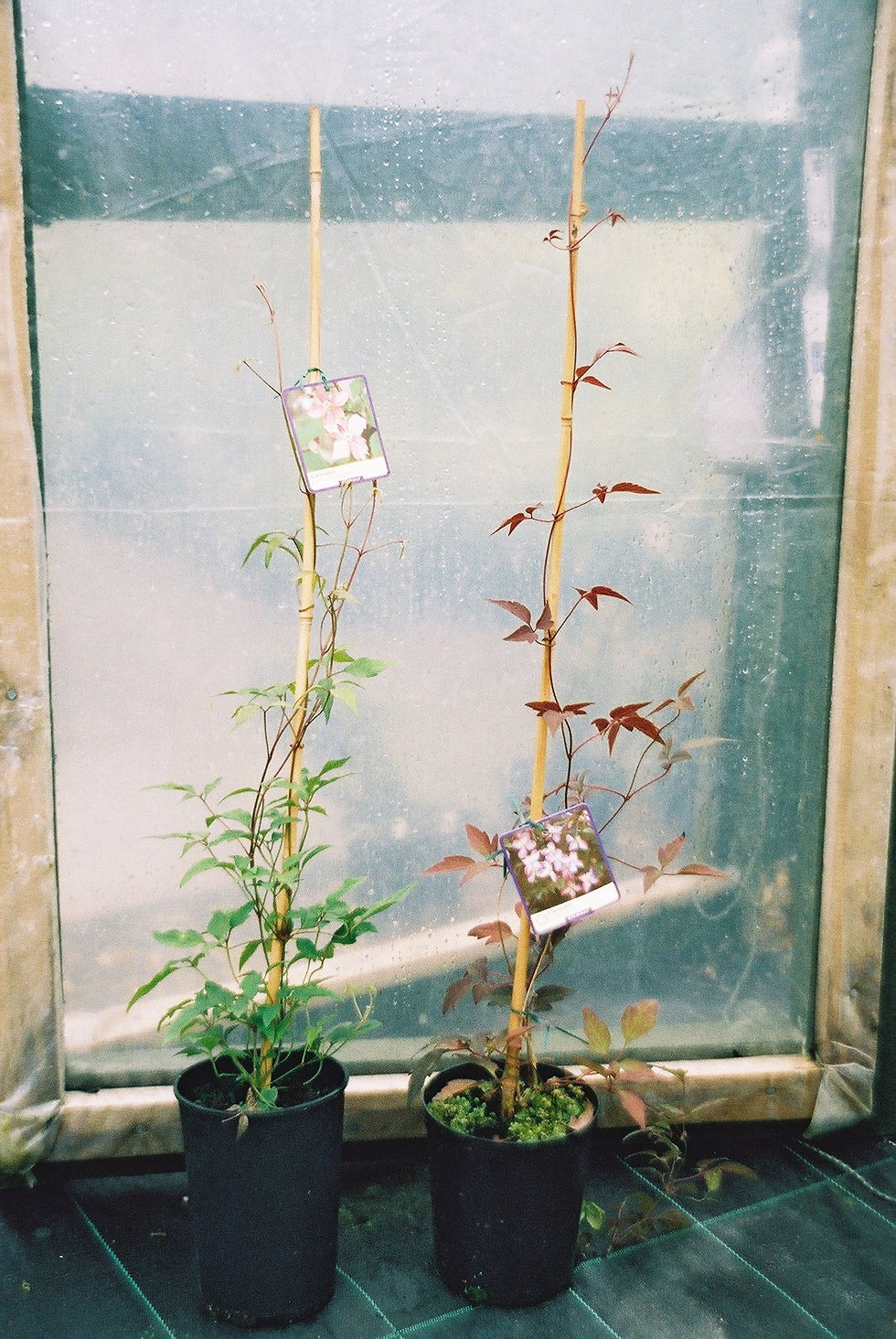
The plant below is a hopeless mess. If you see this in a garden centre walk past it. It isn't worthy of the compost heap. It shows signs of neglect and it has obviously been left over from the previous year as the lower growth is woody.

Now this is a splendid looking group 1 clematis. Plenty of stems coming from the base and branching growth coming off those stems at varying points up the stems. This will turn into a strong, full plant.
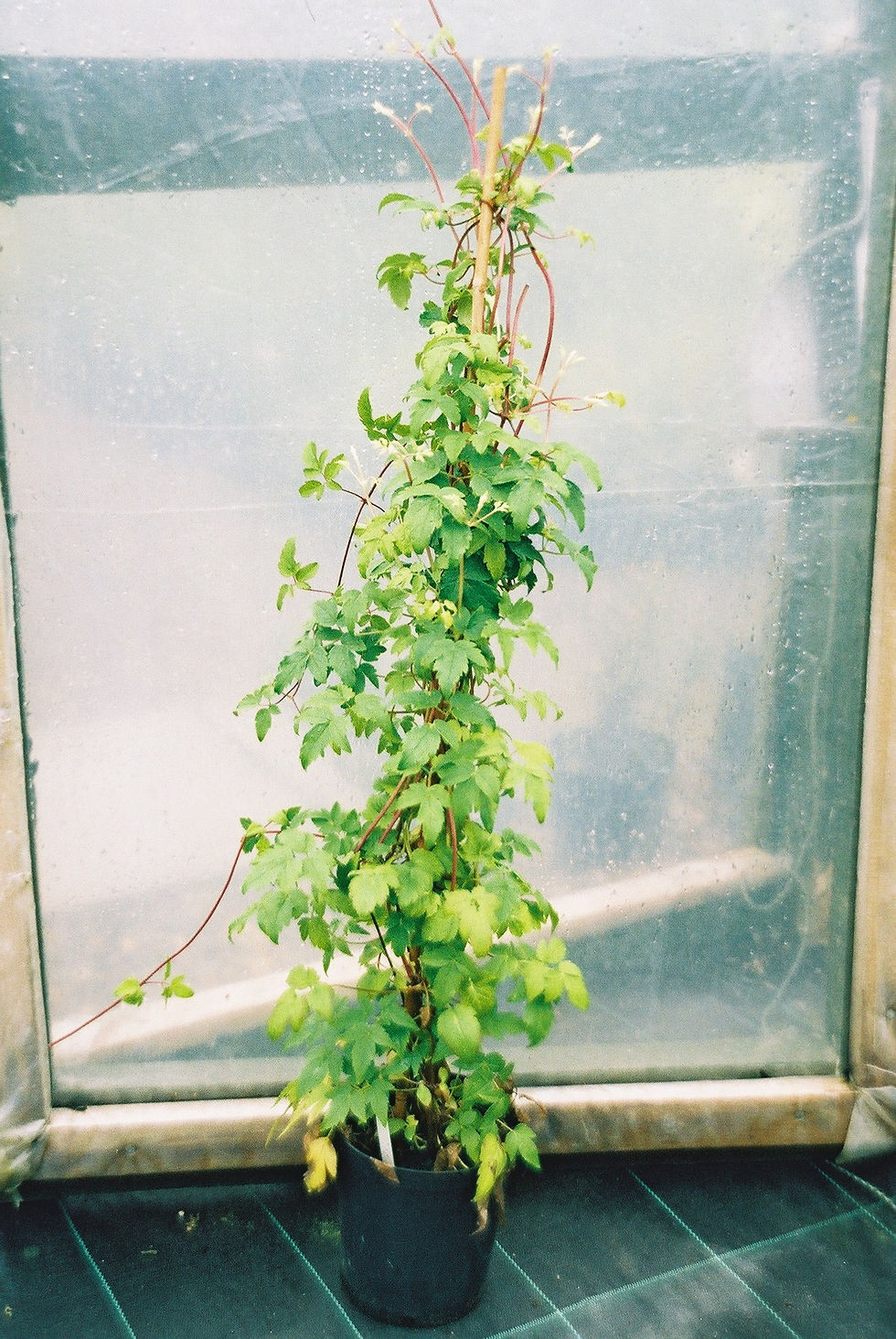
This little chap is a late flowering group 3 specimen. Again don't worry that it hasn't yet reached the giddy heights of the 90cm cane. In fact to be honest after buying this and getting it home I'd pinch out the top node on each stem to get it to bud out even more. This delays the flowering to later in the year, but no problem, it also means you'll get twice or three times as many flowers then you would if you'd not pinched it out.
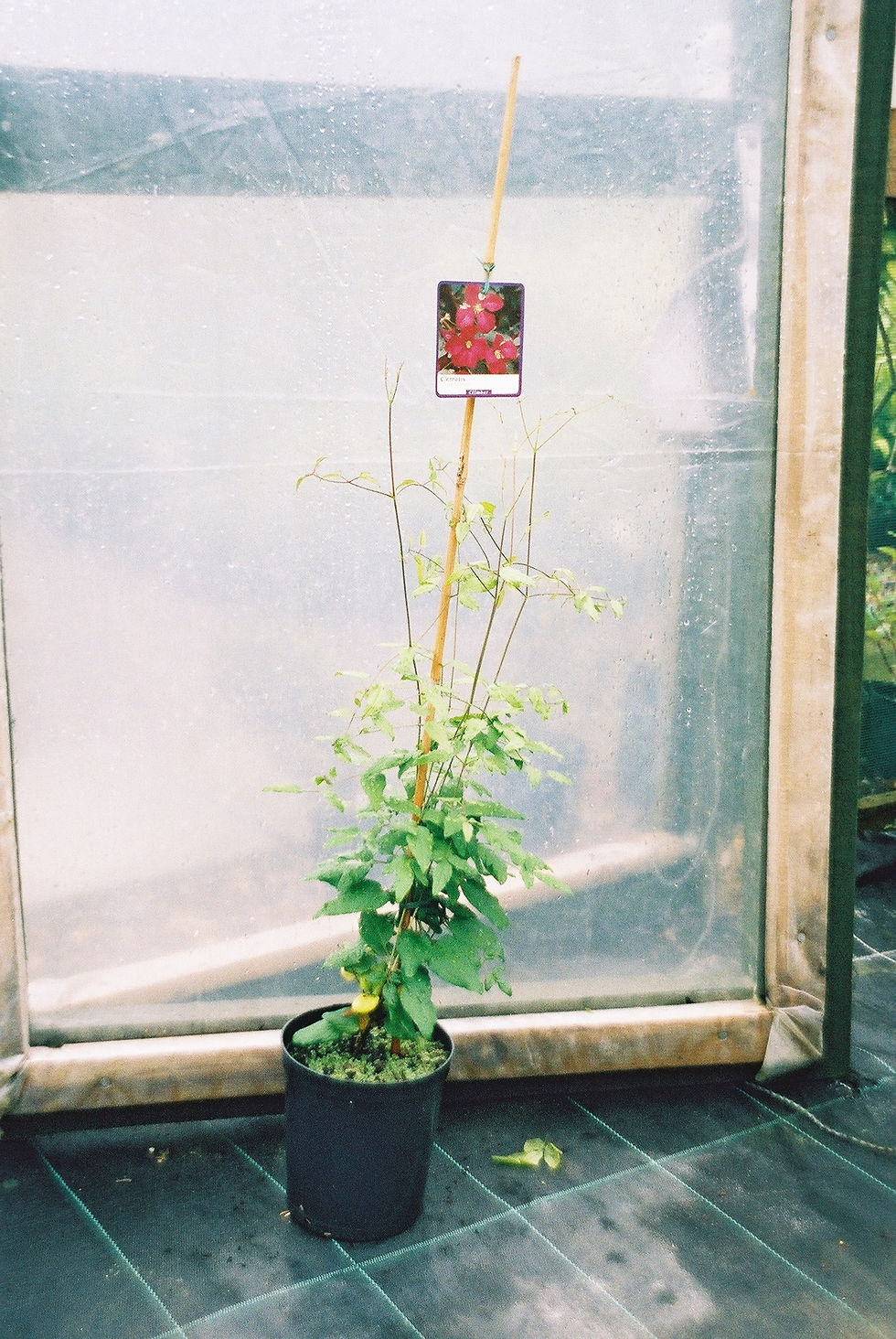
Training and Growing clematis
The classic way the British public grow clematis is throught a trellis on a wall or fence. This of course bares no resemblance to how they grow in their native habitats of South East Europe and the Far East. They are found as ground cover or scrambling through other shrubs and trees.
Let's be totally honest, the foliage and stems are not particularly interesting to look at except for the Armandii and Cartmanii. So why parade them on a trellis? Most people allow them to grow straight to the top of a narrow vertical or fan trellis. The result, like the one in the picture below, is a straggly bare stem with a bunch of tangled growth on top with a few flowers.

Now these chaps, I trained up a tripod of canes. There are three plants per pot and the canes are 2 metres high. Admittedly not very natural but they were used as examples of how to train them. These are both group 3 clematis. "Madame Julia Correvon" on the left and "Romantika" on the right. These are the late summer flowering ones that you cut hard back in spring. As each new stem reached it's second pair of leaves I nipped out the leading bud. The result, two buds from each joint. Once these attain the same stage I nip out again. Do this at least four times as the plants grow. You can see the results. Flowers all the way up the stem, bundles of growth and virtually no visible canes.
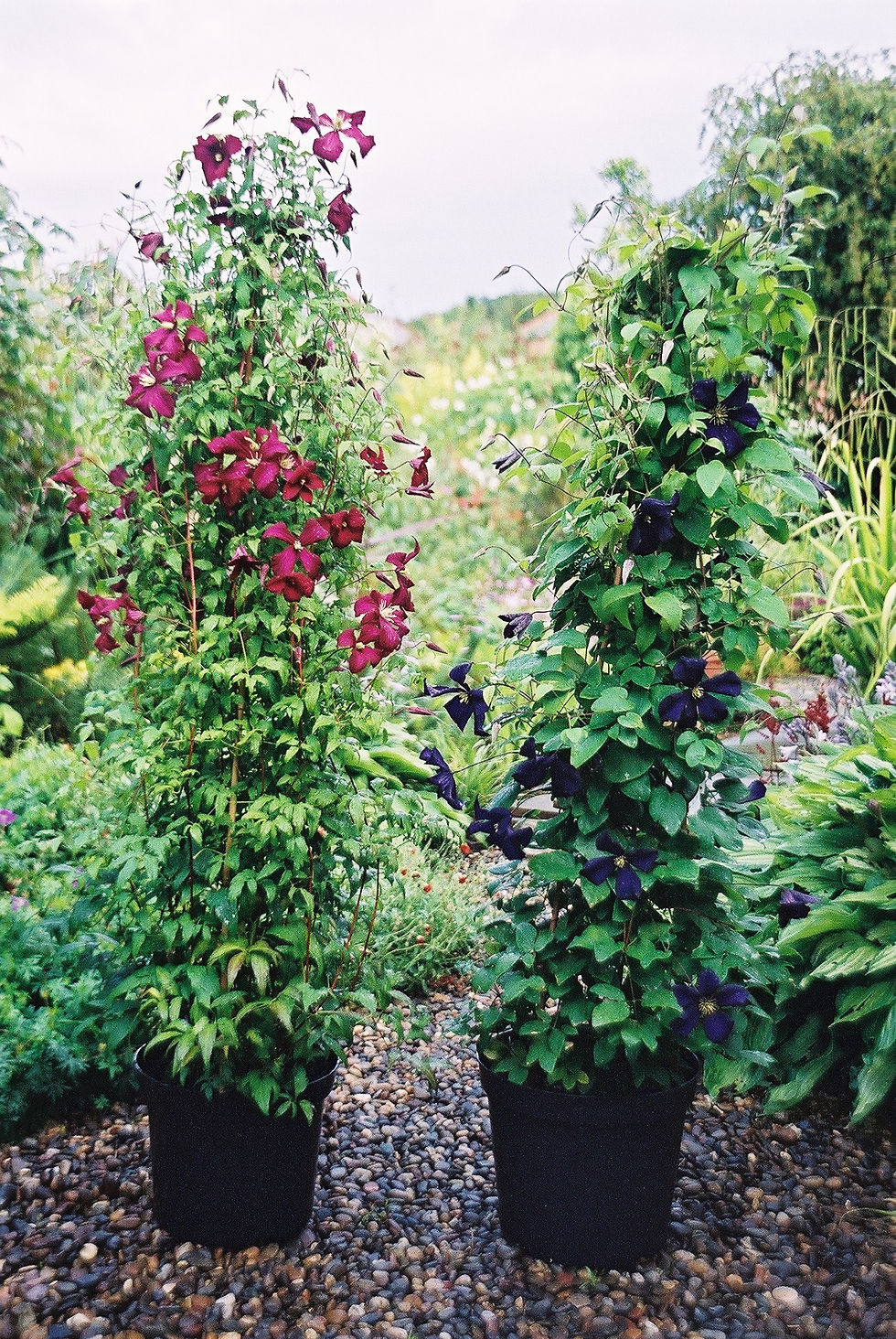
Training on wires horizontally is probably the best way to grow clematis against a wall if you really do have to.
Watch this video to see what I'm on about. Then come straight back here...
Clematis Polish Spirit growing through a Philadelphus. The supporting shrub flowers in May June and is followed by the late flowering clematis which belongs to the group 3's. This group offers an abundance of flowers late into Autumn.

Clematis "Madam Julia Correvon" growing through Berberis Juliannae. Again late flowers adding interest to an otherwise dull shrub.
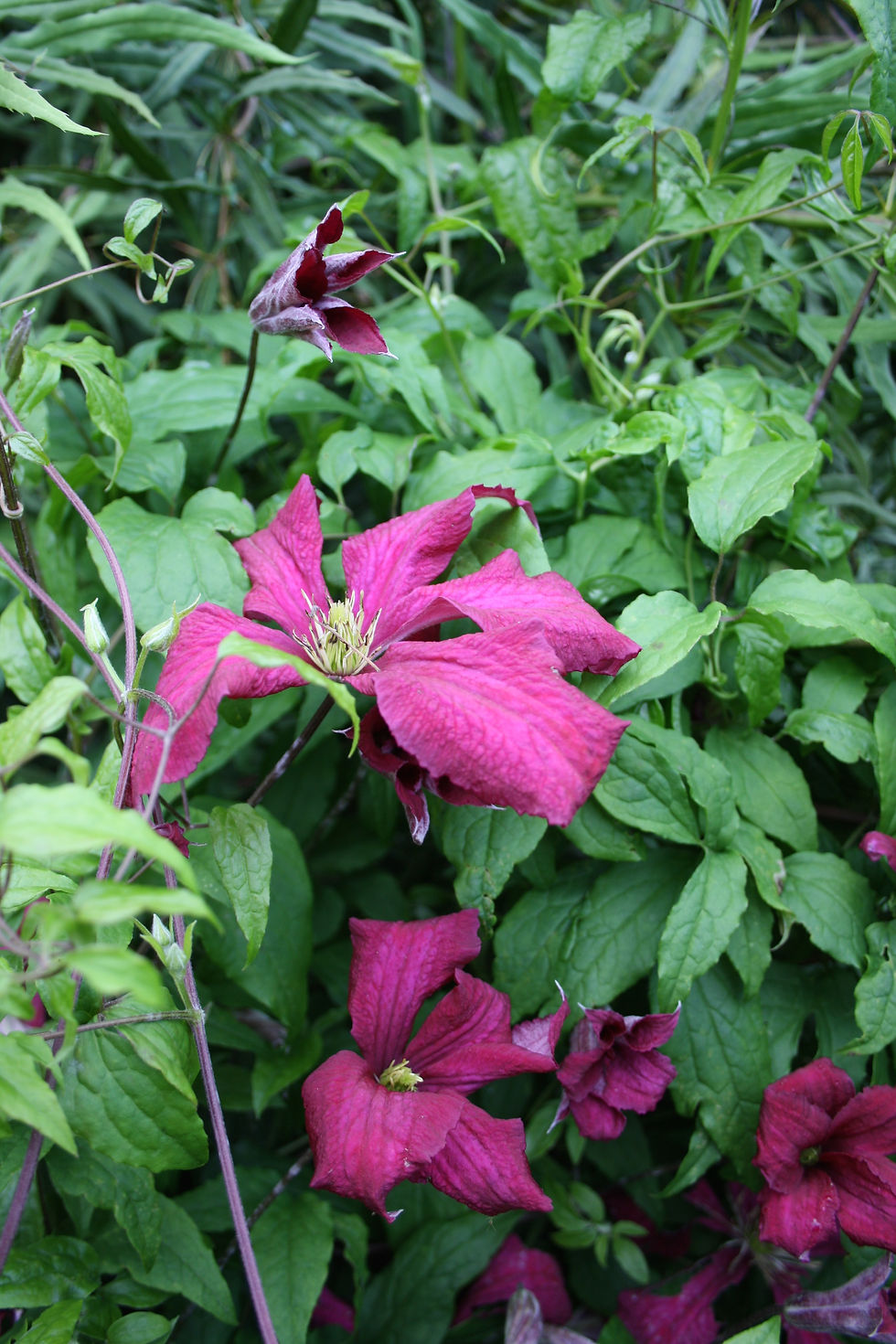
Planting and Growing Conditions
This is one of the bits of the job that many people stumble on. It is often said that clematis like their roots shaded and cool with their tops in the sun. While this is true to some extent, in order to shade the roots I have seen people using slabs of slate, flat stones and cobbles.
What loves to live under these things?
What loves to chew new clematis shoots?
Yup, slugs.
So if you want to shade the roots because you've insisted on growing your clematis unnaturally up against a wall, then use a thick layer of sharp alpine grit. This will create the damp, cool conditions beneath which the roots will enjoy, but will deter slugs and snails.
Clematis are greedy feeders when grown in pots or tubs and require regular liquid or slow release granules applying. Not so in the ground, unless your soil is pure sand and all nutrients are leached into the bedrock several feet below by the slightest shower. There will be enough nutrients in the soil to fulfill their needs. Plus the roots will be encouraged to grow deeper and wider in search of them. If you are going to plant against a wall make sure the root ball is at least 45cms away from the wall itself to reduce the drying action of the stone/brick. Being porous, moisture will be leached out from the soil into the wall and clematis will suffer from lack of water.
When done correctly a clematis grown against a wall can be quite spectacular, like this Perle D'Azure growing in the Helmsley Walled Garden.
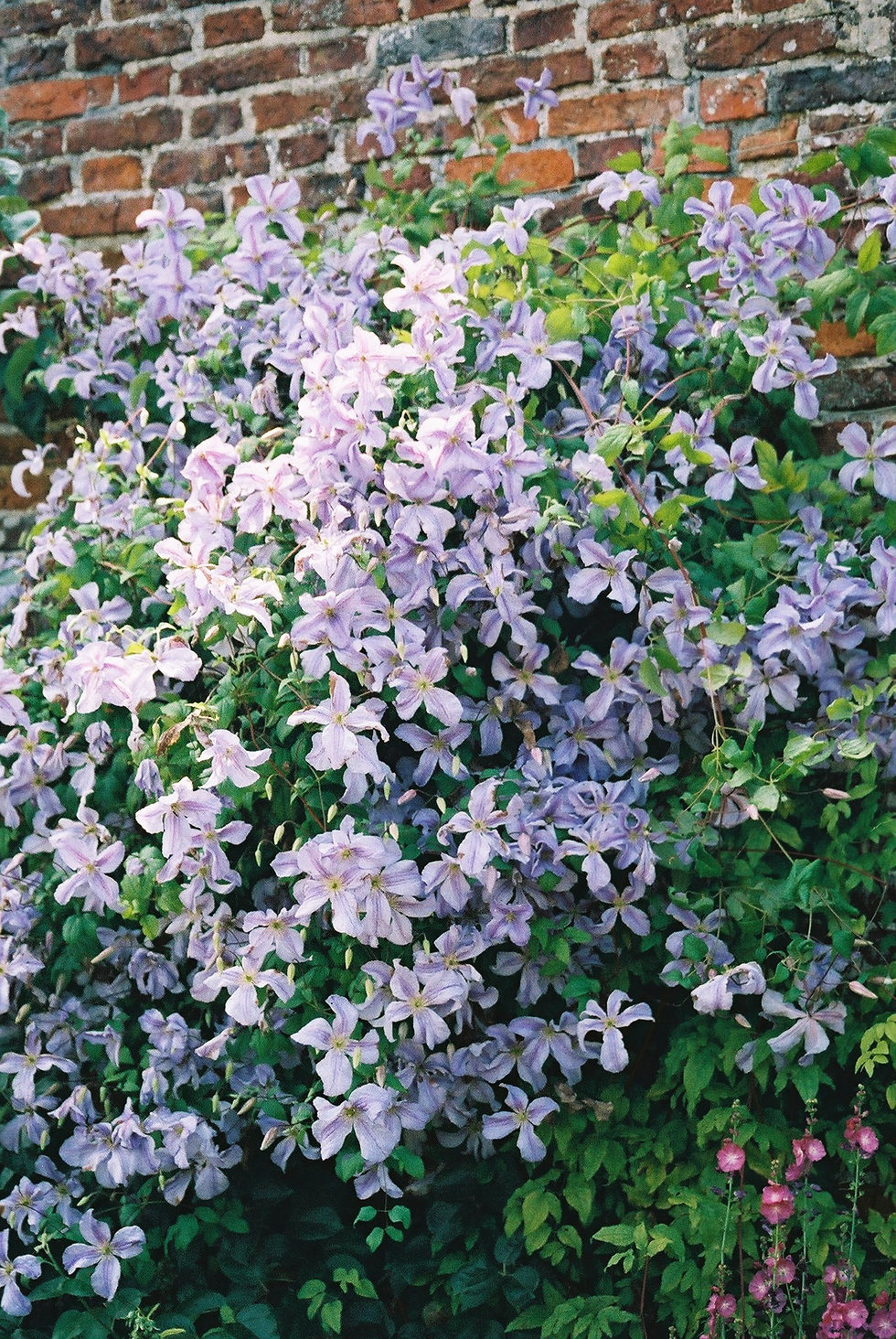
The Pruning Groups
1 Flower early in the year like Macropetalla, Alpina and Montana. Prune as much as required as soon as flowering is finished.
2 Flower Early Summer and often again in late summer. Large flowers like Nelly Moser, Lasurstern and the hybridised double flowering Multi Blue. Prune lightly in March. They produce flower buds after only 4 to 6 pairs of leaves. (Personally I think they're a bit of a faff and wouldn't have one given)
3 Flower mid to late Summer. Produce a mass of flowers like Viticellas, Texensis and Tanguticas. Prune hard down in March almost to 3 to 4 buds above ground level, (except Tanguticas. Just prune them lightly to keep them in check). The group 3's produce flower buds after a dozen or more pairs of leaves.
(Really easy to prune and give the best value for money)
Where did I learn all of this? I worked for 2 years in a specialist Clematis nursery in County Durham. While there I worked predominantly in the tunnel where the group 1 & 3 clematis were grown. They seldom sold due to previous neglect and lack of pruning. I took them under my wing and began a regime of nipping out young growth to encourage multiple stems. Sales improved dramatically after a bit of care and attention.

Comments